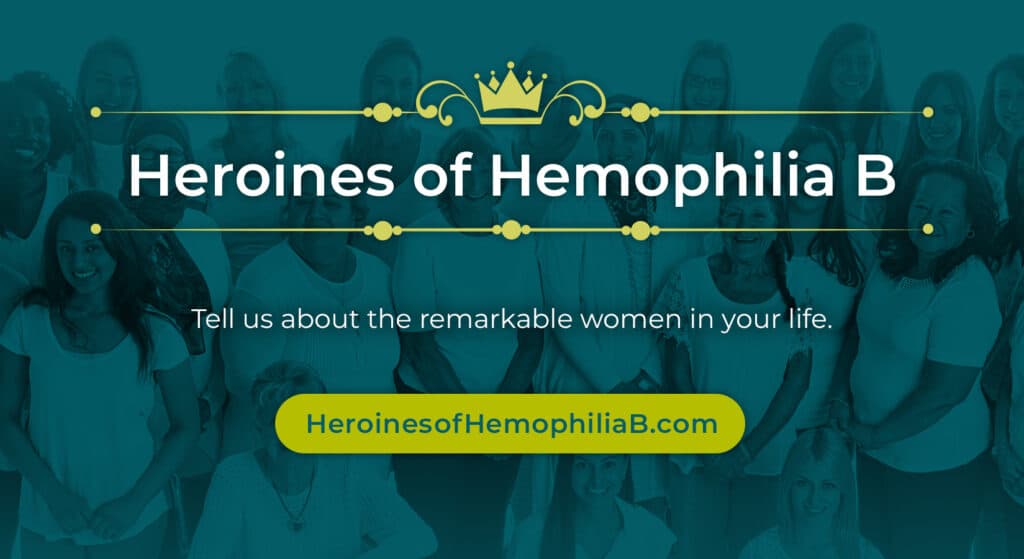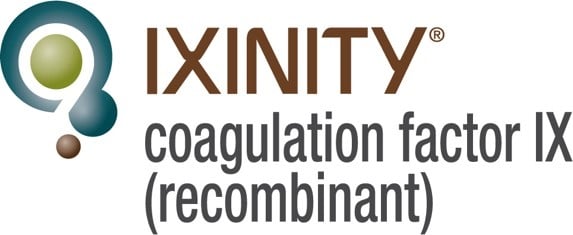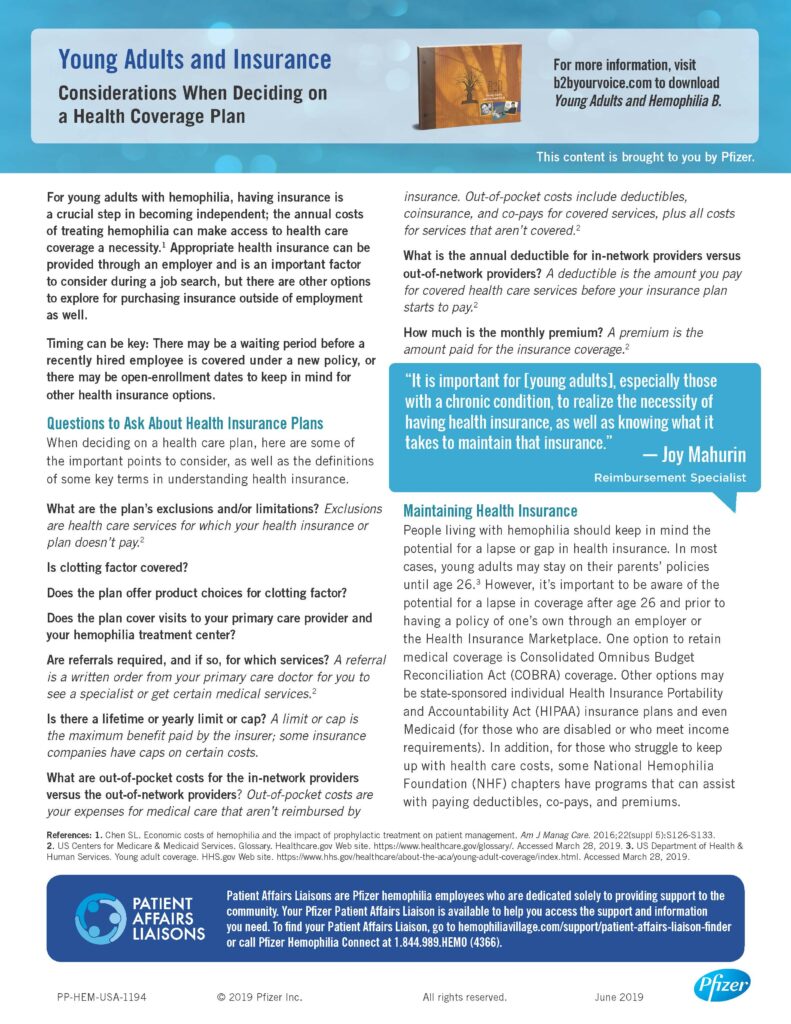admin
From starting school to starting young adult life, BleedingDisorders.com can help at every mile of the journey
Our publications address the many challenges you face as you reach new milestones in life with hemophilia. For this week’s HemaBlog, we suggest you check out this website to learn more about handling life’s many phases and changes!
This is a paid public announcement from Takeda and does not constitute an endorsement of products or services. When you click on the links in this blog entry, you will be directed to a Takeda website. LA Kelley Communications always advises you to be a savvy consumer when contacting any company; do not reveal identifying information against your will.
 Every life has its twists and turns, and that’s even more true for young people with bleeding disorders and their caretakers. BleedingDisorders.com is right there with you through every mile of the journey, with info and resources designed to help you and your family navigate change—whether that means your child’s first day of school or their last day living at home.
Every life has its twists and turns, and that’s even more true for young people with bleeding disorders and their caretakers. BleedingDisorders.com is right there with you through every mile of the journey, with info and resources designed to help you and your family navigate change—whether that means your child’s first day of school or their last day living at home.
As school is getting underway, get the team together
Starting school is a big step—for you and your child! To make it as safe as possible, it’s a good idea to go over some important topics with key members of your school team, including your child’s teacher, the school nurse, the guidance counselor, the gym teacher, and someone from administration.1 You play an important role in educating them about your child’s bleeding disorder and what they should expect with your child under their supervision. And of course, this meeting can be virtual or in-person, depending on your school’s situation.
Wondering what other topics you should cover with your ace team of educators? Bleedingdisorders.com has put together a helpful list.
Growing up and taking control
Young adulthood is another important transitional period for people living with a bleeding disorder. For some, it might be the first time in their life they are responsible for managing their treatment and their symptoms on their own. And whether they are moving into a college dorm or just moving out, you and your child should make sure you’re both prepared for the transition.
Here are a couple key tips for your family that could help make the move go smoother:
Prep for an Emergency
With hemophilia, a bleeding emergency can come at any time. Preparing an Emergency Care Letter and an emergency bag with everything they’ll need can save time and stress.2
Ace Your Storage Quiz
Make sure they know exactly how to store and handle their treatment. Products that have been improperly stored or have expired may not be as effective in preventing or treating bleeding episodes.3
See the full list of helpful tips for young adults at BleedingDisorders.com.
No matter what life stage you or your child is at, it’s important to have a good relationship with your local Hemophilia Treatment Center, where you can get expert advice about managing a bleeding disorder. Your healthcare provider team can also help with any big life changes your family may face. And of course, connect with the Bleeding Disorders community on Facebook, Instagram, YouTube, and Twitter, and sign up to get the latest news and updates.
- Phyllis McIntosh; HemAware. Back to school. 2006. Accessed September 14, 2020. https://www.hemophiliafed.org/uploads/Back-to-School_Hemaware.pdf
- Emergency preparedness. Steps for Living website. Accessed September 14, 2020. https://stepsforliving.hemophilia.org/step-up/treatment/emergency-preparedness
- Frase M. Safely storing factor at home. HemAware website. June 21, 2010. Accessed September 14, 2020. https://hemaware.org/bleeding-disorders-z/safely-storing-factor-home

Copyright © 2020 Takeda Pharmaceutical Company Limited. Lexington, MA 02421. 1-800-828-2088. All rights reserved. TAKEDA and the TAKEDA logo are trademarks or registered trademarks of Takeda Pharmaceutical Company Limited.
US-NON-2287v1.0 09/20
James’ Story: Why Preparedness and Support Matter
I’ve spent the last 24 years working in developing countries, helping families and nonprofits gain access to better healthcare for hemophilia. The story below touched my heart as I have been to the Philippines, and we now are partners in progress for better hemophilia care. Read James’s story below to see how his life changed with proper treatment!
Submitted by Takeda

This is James experience, but your experience may be different.
Learning, Living, and Growing
Born and raised in a rural village in the Philippines, James grew up in a careful household. Losing one brother to complications from hemophilia at a young age and living far away from any access to proper healthcare, his parents taught him to be cautious throughout his childhood. “My parents would limit my activities a lot. They loved me, but wanted to make sure I couldn’t hurt myself,” James recalls. When James did have a bleeding episode, the family would have to travel miles and miles to the nearest hospital to get him a blood transfusion.
James and his family moved to Los Angeles when he was 16 for one reason: his hemophilia. For the first time in his life, James learned more about hemophilia and the importance of maintaining factor levels. He began factor replacement therapy after his care team recommended a prophylaxis regimen.*
Learning and connecting with his hematologist, James realized his hemophilia was only a part of him, not who he was. “[He] helped me change my perception of hemophilia, my understanding of hemophilia. It gave me a little bit more confidence.”
*James’ regimen was based on his needs as determined by him and his care team. This was his experience, but your experience may be different.

Caring and Giving
Through surgeries, physical activities, and personal adventures, James found support in his wife Carla along with his care team. Having gone through surgery twice, he learned that preparedness is key. “Before both procedures there was a lot of discussion around how I’d be kept at a sufficient factor level. And for me, we decided to use factor prophylaxis during both surgeries, so they could continue to track my levels.” James could trust that his care team had his back in the operating room and Carla was there to help during recovery. “I wanted to be active again, to go out with her like we did before the surgeries. She was a big part of my recovery,” James remembers.
Post-surgery, Carla assumed the role of caregiver and ran with it. She partnered with James’ care team, including his physical therapist, planned his recovery, and learned how to help administer factor through a port.
Since recovering from his surgeries, James has been able to maintain an active lifestyle. Once he received the green light from his hematologist, James made a plan to stay fit. Through his preparedness and the support from his care team, James has been able to participate in bike events, including a charity ride with his friends.
“Crossing the finish line was such a great moment… tiring, but also rewarding. I was so proud of myself.” To James, crossing the finish line meant more than just finishing the ride. It was also a testament to the dedication of his care team and of Carla. Having their support, he learned he could trust his body again.
Today, James remains active and continues his adventures with Carla as they travel to many parts of the world. Together, they stay active in their local hemophilia community, sharing their story of recovery and resilience.
Adapted from Hello Factor magazine.
Visit bleedingdisorders.com to read more about patients like James and their stories.
Any factor and physical activity regimens mentioned were developed for James only after consultation with his care team, and may not be appropriate for all patients. Your factor regimen may be individualized after consultation with your care team.
This is a paid public announcement from Takeda and does not constitute an endorsement of products or services. When you click on the links in this blog entry, you will be directed to the bleedingdisorders.com website. LA Kelley Communications always advises you to be a savvy consumer when contacting any company; do not reveal identifying information against your will.
Copyright © 2020 Takeda Pharmaceutical Company Limited. 300 Shire Way, Lexington, MA 02421. 1-800-828-2088. All rights reserved. TAKEDA and the TAKEDA logo are trademarks or registered trademarks of Takeda Pharmaceutical Company Limited. US-NON-2025v1.0 08/20
Women, the community, and hemophilia B
There are many facets to our community. I think you could say there are as many facets as there are people with bleeding disorders. People may identify by the type of bleeding disorder they have, or the treatment they are on. But it’s important to remember this is a community in every sense of the word. That means everyone is important. And we should take a moment whenever we can to show our gratitude for the people who help hold everything together. Please read the public-service message below from Medexus to see what one company is doing to honor those people.
Here’s what’s happening in the hemophilia B space!
Medexus Pharma, the people behind IXINITY® [coagulation factor IX (recombinant)], has launched a webpage specifically to honor the remarkable women they are calling the Heroines of Hemophilia B. These are women who advocate for themselves—as women with hemophilia B—or have made an impact lending their support to others.
The work women do as healthcare professionals is absolutely essential. And many times, the key provider of care in the family setting is also a woman. Then there are the women who have hemophilia B. As a patient population, these women are often overlooked. It’s time they got the care and support they deserve.
One of the great things about the Heroines of Hemophilia page is that it gives you a way to show your gratitude by nominating someone in your life. If you know of a woman who has courageously taken a stand to advocate for herself, or gone over and above in the care of someone else, go to www.HeroinesofHemophiliaB.com and nominate her as a Heroine of Hemophilia B.
This is a community in every sense of the word. Here’s a way to show to it.

INDICATIONS AND IMPORTANT SAFETY INFORMATION
What is IXINITY®?
IXINITY [coagulation factor IX (recombinant)] is a medicine used to replace clotting factor (factor IX) that is missing in adults and children at least 12 years of age with hemophilia B. Hemophilia B is also called congenital factor IX deficiency or Christmas disease. Hemophilia B is an inherited bleeding disorder that prevents clotting. Your healthcare provider may give you IXINITY to control and prevent bleeding episodes or when you have surgery.
IXINITY is not indicated for induction of immune tolerance in patients with Hemophilia B.
IMPORTANT SAFETY INFORMATION for IXINITY®
- You should not use IXINITY if you are allergic to hamsters or any ingredients in IXINITY.
- You should tell your healthcare provider if you have or have had medical problems, take any medicines, including prescription and non-prescription medicines, such as over-the-counter medicines, supplements, or herbal remedies, have any allergies, including allergies to hamsters, are nursing, are pregnant or planning to become pregnant, or have been told that you have inhibitors to factor IX.
- You can experience an allergic reaction to IXINITY. Contact your healthcare provider or get emergency treatment right away if you develop a rash or hives, itching, tightness of the throat, chest pain, or tightness, difficulty breathing, lightheadedness, dizziness, nausea, or fainting.
- Your body may form inhibitors to IXINITY. An inhibitor is part of the body’s defense system. If you develop inhibitors, it may prevent IXINITY from working properly. Consult with your healthcare provider to make sure you are carefully monitored with blood tests for development of inhibitors to IXINITY.
- If you have risk factors for developing blood clots, the use of IXINITY may increase the risk of abnormal blood clots.
- Call your healthcare provider right away about any side effects that bother you or do not go away, or if your bleeding does not stop after taking IXINITY.
- The most common side effect that was reported with IXINITY during clinical trials was headache.
- These are not all the side effects possible with IXINITY. You can ask your healthcare provider for information that is written for healthcare professionals.
Please see click here for full Prescribing Information.
You are encouraged to report side effects of prescription drugs to the Food and Drug Administration. Visit www.fda.gov/medwatch, or call 1-800-FDA-1088.


Aptevo BioTherapeutics LLC, Chicago, IL 60606
IXINITY® [coagulation factor IX (recombinant)] and any and all Medexus Pharma, Inc. brand, product, service and feature names, logos, and slogans are trademarks or registered trademarks of Aptevo BioTherapeutics LLC and Medexus Pharma, Inc. in the United States and/or other countries.
© 2020 Medexus Pharma, Inc. All rights reserved. MP-IX-0295
Happy Hemophilia Mother’s Day!
 When two mothers meet, whether they know one another or not, there is an instant bond and understanding. Thoughts, feelings and words flow easily, especially when it comes to the subject of children and childbirth, in other words, being a mother. For example, a man I worked with for two years never shared much personally. I happened to meet his girlfriend in passing; our eyes locked, we introduced one another and in 15 intense but pleasurable minutes covered children (we each have three), names, what their births were like in detail, school, how to juggle work and children, our divorces, how we handled dating… if we didn’t have appointments to get to, we would have chatted all night!
When two mothers meet, whether they know one another or not, there is an instant bond and understanding. Thoughts, feelings and words flow easily, especially when it comes to the subject of children and childbirth, in other words, being a mother. For example, a man I worked with for two years never shared much personally. I happened to meet his girlfriend in passing; our eyes locked, we introduced one another and in 15 intense but pleasurable minutes covered children (we each have three), names, what their births were like in detail, school, how to juggle work and children, our divorces, how we handled dating… if we didn’t have appointments to get to, we would have chatted all night!
Add to motherhood hemophilia, and you have the ingredients for potent emotional bonding glue.
We all know hemophilia moms are pretty amazing. I’ve been meeting them for 30 years, all types: moms who are professionals, moms who are rich, moms who make minimum wages, single moms, moms of six children, moms of only children, moms who smoke, moms who are health fanatics, moms who are teens and moms in middle age. I’ve met them overseas: Africans, Asians, South Americans, both the rich and the deathly poor. When we meet, there is the bond of motherhood that instantly forms, but there is also the bond of motherhood of a child with hemophilia. We are not strangers to one another.
I thought back today to when I first became a mother: 1987, at the height of the public fear-frenzy and anger surrounding HIV. Our community was torn apart, and all eyes were on Washington DC and New York City, where the leaders were, deciding the fate of thousands. Thousands of mothers watched their sons died.
And other mothers like me were desperately fortunate not to have shared that fate. Yet we also took up roles in the aftermath. After all, a whole generation seemed gone; those young men who perished could have become hemophilia leaders in the community. Instead, it was the mothers who picked up the leadership mantle.
Think about it. About the roles of mothers then. There was a new generation of mothers who were called to serve the community, because so many young men with hemophilia could no longer do that. For the next fifteen years, I watched this new generation of mothers become leaders. You know their names: Michelle Rice and Dawn Rotellini of NHF; executive directors Debbi Adamkin, Michelle Kim, Heidi Forrester, Janet Brewer; and directors like Sonji Wilkes and Shari Luckey. Many others went to work for Pharma too.
The great thing about having mothers involved is that they can relate to the younger men as sons, and raise them up as leaders too. Some of their own sons have become leaders in the community. But someday, these mother-leaders will be retiring from the community, their mission completed, their children raised. The good news is that more and more, a new generation of patient leaders are coming of age and making their mark. That’s as it should be. From about 1987 to 2000 or so, we had no young men to learn leadership. The parents, mothers especially, had to step up. And now the boys and girls born during that era are here to learn…. And to lead.
Mother’s Day—not always happy, often bittersweet—is for the brave mothers who waged the war against HIV and whose sons were sacrificed, as well as for the mothers who became leaders to help steer the community into open waters of hope and a future where young men will be safe from harm. We thank you.




